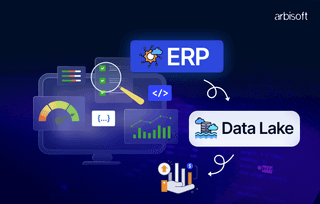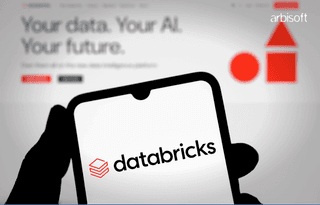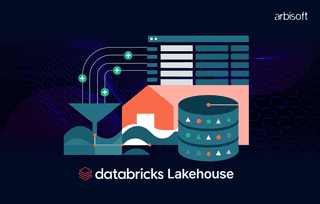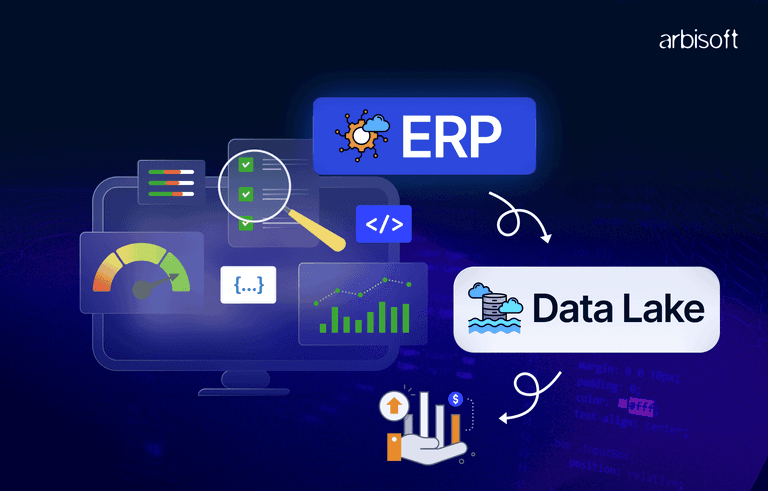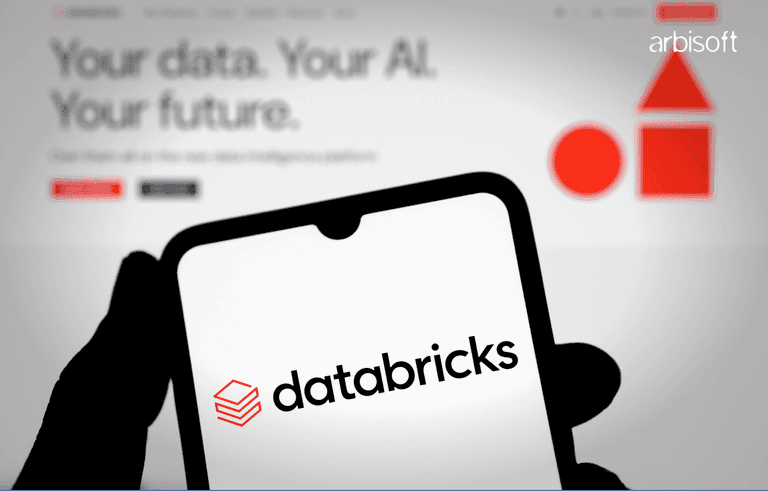We put excellence, value and quality above all - and it shows




A Technology Partnership That Goes Beyond Code

“Arbisoft has been my most trusted technology partner for now over 15 years. Arbisoft has very unique methods of recruiting and training, and the results demonstrate that. They have great teams, great positive attitudes and great communication.”
How To Make Software Design Discussions More Productive

Software design discussions are a key part of building a strong, reliable, and user-friendly product. These meetings are where the team plans how a system should work, how it should be structured, and how different parts will connect with each other. But many times, these discussions become confusing, slow, or unhelpful.
Clear design discussions also support downstream processes like testing and QA. In fact, teams that focus on thoughtful architecture and communication often see better outcomes in areas like Software Quality Assurance because design clarity helps QA teams work more effectively.
In this blog, we’ll talk about how to make these design talks clear, focused, and productive. Whether you're a developer, designer, product manager, or architect, these tips will help your team work better together and make smarter decisions.
Get Everyone Aligned Before the First Pixel Is Designed.
Download the Pre-Design Meeting Prep Template

Get the Pre-Design Meeting Prep Template trusted by product and design teams to launch faster with fewer revisions.

12 Practical Ways to Run Better Software Design Discussions
1. Start With a Clear Goal
Before the meeting even starts, define the goal. Ask questions like:
- What problem are we solving?
- Are we designing something new or improving something old?
- What decisions do we want to make by the end of the meeting?
Tip: Write down the main goal and share it with everyone. A clear goal keeps the discussion on track.
2. Prepare Before the Meeting
Good design discussions don’t just happen. They need preparation. The person leading the meeting should do the following:
- Collect important background information
- Create a short slide or doc that explains the problem
- List out possible design options (even rough ones)
- Mention past attempts or current issues (if any)
Tip: Share this document with the team 1–2 days before the meeting so they have time to think.
3. Bring the Right People to the Table
Invite people who are directly involved in the design. This usually includes:
- Developers (backend, frontend, or both)
- A product manager or project owner
- A UX/UI designer (if design affects user experience)
- A technical architect or senior engineer (for system-level input)
- QA or DevOps (only if they’re impacted by design decisions)
Involving UX/UI designers early in design discussions can significantly improve the product’s usability and user satisfaction. If you’re wondering how UX ties into the bigger picture, especially from a strategic point of view, check out our blog on How Important Is UX in Product Management. It explores why UX should be a core focus for every product manager.
Why this matters: Having too many people creates noise. Having the right people creates value.
4. Use Simple Visuals to Explain Complex Ideas
Some design topics are hard to explain in words. That’s where visuals help. You can use:
- Flowcharts to show user or data flow
- Diagrams to show system architecture
- Tables to compare options
- Whiteboards or digital tools like Miro, Figma, Lucidchart
Why this matters: Visuals help everyone understand the same thing, even if they come from different backgrounds.
5. Create and Follow a Clear Agenda
An agenda helps guide the discussion. It also sets expectations. A good design meeting agenda can look like this:
- Problem overview (5 mins) - What are we trying to solve?
- Current system explanation (5–10 mins) - How does it work now?
- Design options (15 mins) - What are the possible solutions?
- Open discussion (20 mins) - Share thoughts, questions, and concerns.
- Final decision or next steps (10 mins) - What’s been decided? What’s left?
Tip: Share the agenda ahead of time. This gives people a chance to prepare and stay focused during the call.
6. Encourage Everyone to Speak (Especially Quiet Voices)
Sometimes, only the loudest or most senior people speak in design discussions. That’s a problem. Often, great ideas come from junior engineers, designers, or people who are closer to the problem.
How to fix it:
- Ask quiet people directly: “What do you think?”
- Use “silent brainstorming” for 5 minutes before discussion
- Use tools like Google Docs or FigJam, where people can add comments
Why this matters: You get more perspectives, better solutions, and a stronger team culture.
7. Discuss Trade-offs, Not Just Ideas
Good design is not about perfect answers. It’s about understanding trade-offs. Every choice has pros and cons:
- Faster performance vs. more memory use
- Simpler code vs. less flexibility
- Faster release vs. long-term stability
Tip: For every option discussed, ask:
“What are the benefits? What are the risks? What might go wrong?”
This helps the team make balanced decisions.
8. Stay Focused (Avoid Rabbit Holes)
Design discussions often go off-track. People start talking about things that are not related or too detailed.
How to handle it:
- Appoint a “meeting guide” who can say, “Let’s note that and move on.”
- Use a “parking lot”, a list of ideas you’ll revisit later
- Remind the team about the meeting goal if things drift
Why this matters: Time is limited. Focus leads to results.
9. Write Down Decisions Clearly
By the end of the meeting, make sure the team knows:
- What was decided (and why)
- What needs more research
- Who is responsible for next steps
- When you’ll follow up
Use simple tools like:
- A shared Google Doc
- A Notion page
- A Confluence doc
- A Slack summary post
Why this matters: It avoids repeating the same discussions. It also creates a record for new team members or future reviews.
10. Use a Lightweight Design Document
Not every discussion needs a long, detailed design doc. But even a simple one-page template can help everyone stay aligned.
Here’s a simple format:
- Problem: What are we solving?
- Goals: What does success look like?
- Options: What are the possible solutions?
- Decision: What did we choose?
- Reasons: Why did we choose it?
- Open Questions: What do we still need to figure out?
Tip: Use this doc to guide the meeting. It also helps with documentation and handover.
11. Follow Up With Action
A design meeting is only useful if it leads to action. After the meeting:
- Share notes and decisions
- Assign owners to tasks
- Update the backlog, ticket, or project board
- Schedule a follow-up if more discussion is needed
Why this matters: Many good design ideas die if no one owns them. Following up turns ideas into impact.
12. Make It a Habit to Reflect and Improve
Ask the team after a few meetings:
- What’s working well in our design discussions?
- What could be better?
- Are we making good use of time?
Use the answers to improve future meetings. A 5-minute check-in every few weeks can lead to much better discussions.
A Simple Framework: The CLEAR Method
To make software design discussions more structured and productive, you can follow the CLEAR framework. Each letter stands for a step that helps guide the discussion in the right direction.
C – Clarify the Problem
Start by clearly explaining the problem you're solving. Avoid jumping into solutions too quickly. Make sure everyone understands what the issue is.
Example: “We need to improve the response time of the dashboard because users are complaining about slow load times.”
L – List the Options
Share all possible design solutions. Even if they are not perfect, it's good to put them on the table. Ask the team for other ideas too.
Example: “We could use caching, lazy loading, or reduce API calls.”
E – Evaluate the Trade-offs
For each option, discuss what’s good and what’s risky. Talk about performance, cost, development time, and how it will affect users.
Example: “Caching is fast but adds complexity. Lazy loading is simple but may not solve the full issue.”
A – Align on a Decision
Once you’ve discussed the options, agree on the one that best meets your needs. Make sure everyone is on board or understands the reasoning.
Example: “We agree to start with lazy loading and test the impact. If it’s not enough, we’ll explore caching later.”
R – Record the Outcome
Write down the final decision, why it was made, and what needs to happen next. Share this with the team to keep everyone on the same page.
Example: “Decision: Use lazy loading. Owner: Sarah. Deadline: Friday. Next Review: Next Sprint Planning.”
This framework keeps your discussions focused, fair, and actionable. It also avoids confusion and saves time in future meetings.
To Wrap Up,
Running better software design discussions isn’t just about saving time—it’s about building smarter products, faster. When teams come prepared, stay focused, and make space for diverse input, they design solutions that are not only technically sound but also user-centered and scalable. By following these 12 practical tips and the CLEAR framework, you can turn every design meeting into a strategic step forward.
If you’re looking for a technology partner who values thoughtful design and collaboration as much as you do, contact Arbisoft. We’re here to help you build software that works beautifully—inside and out.








